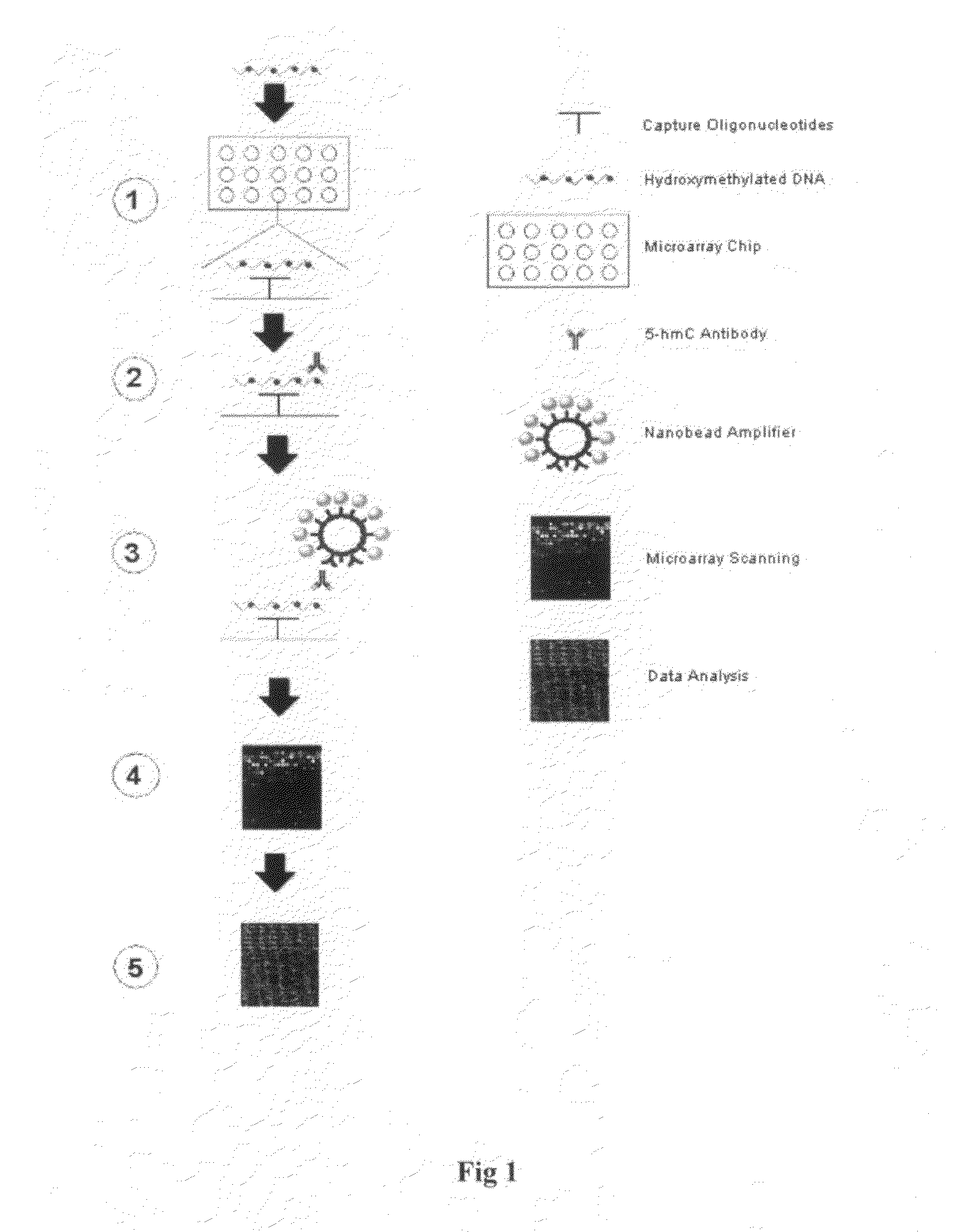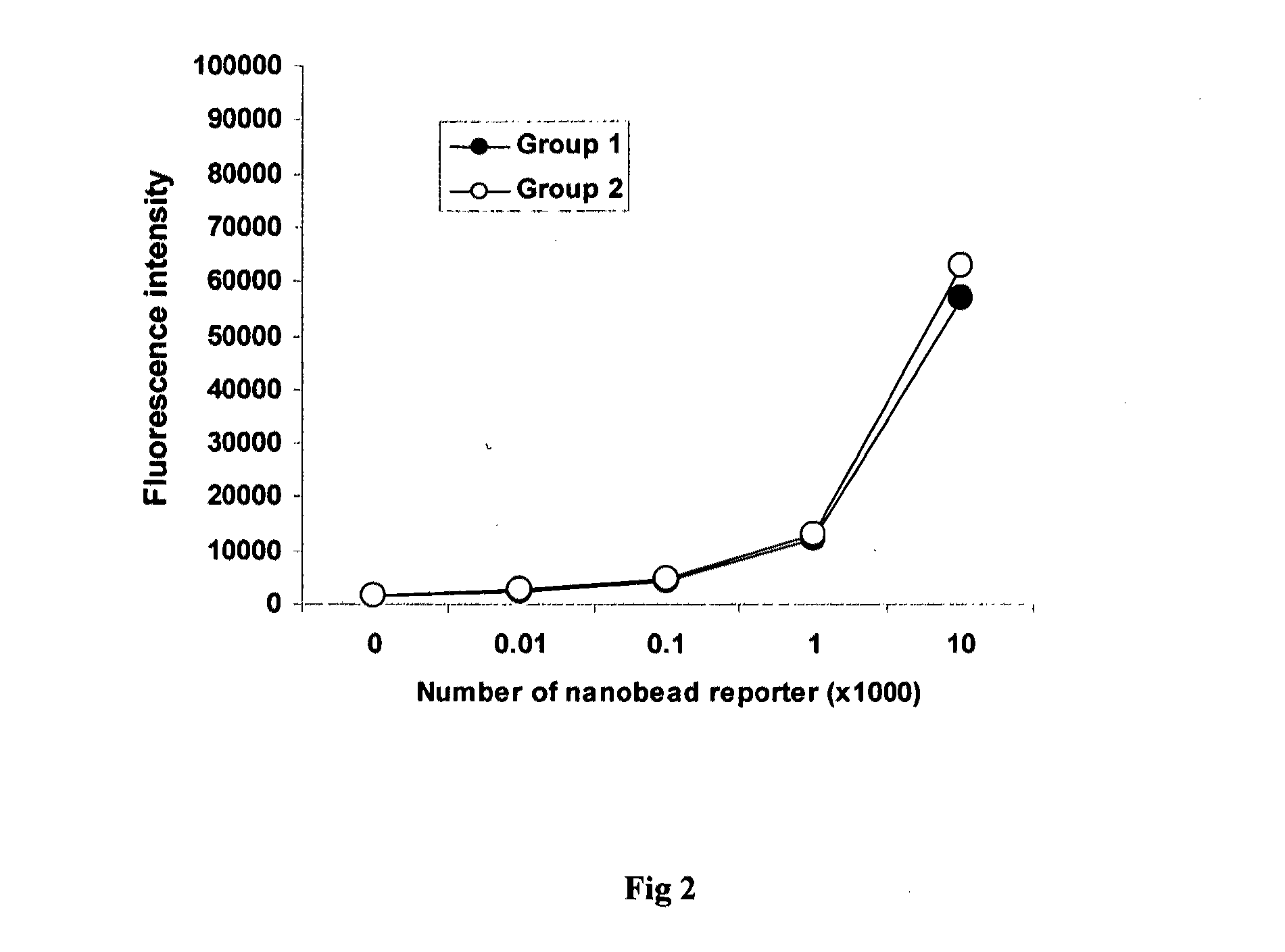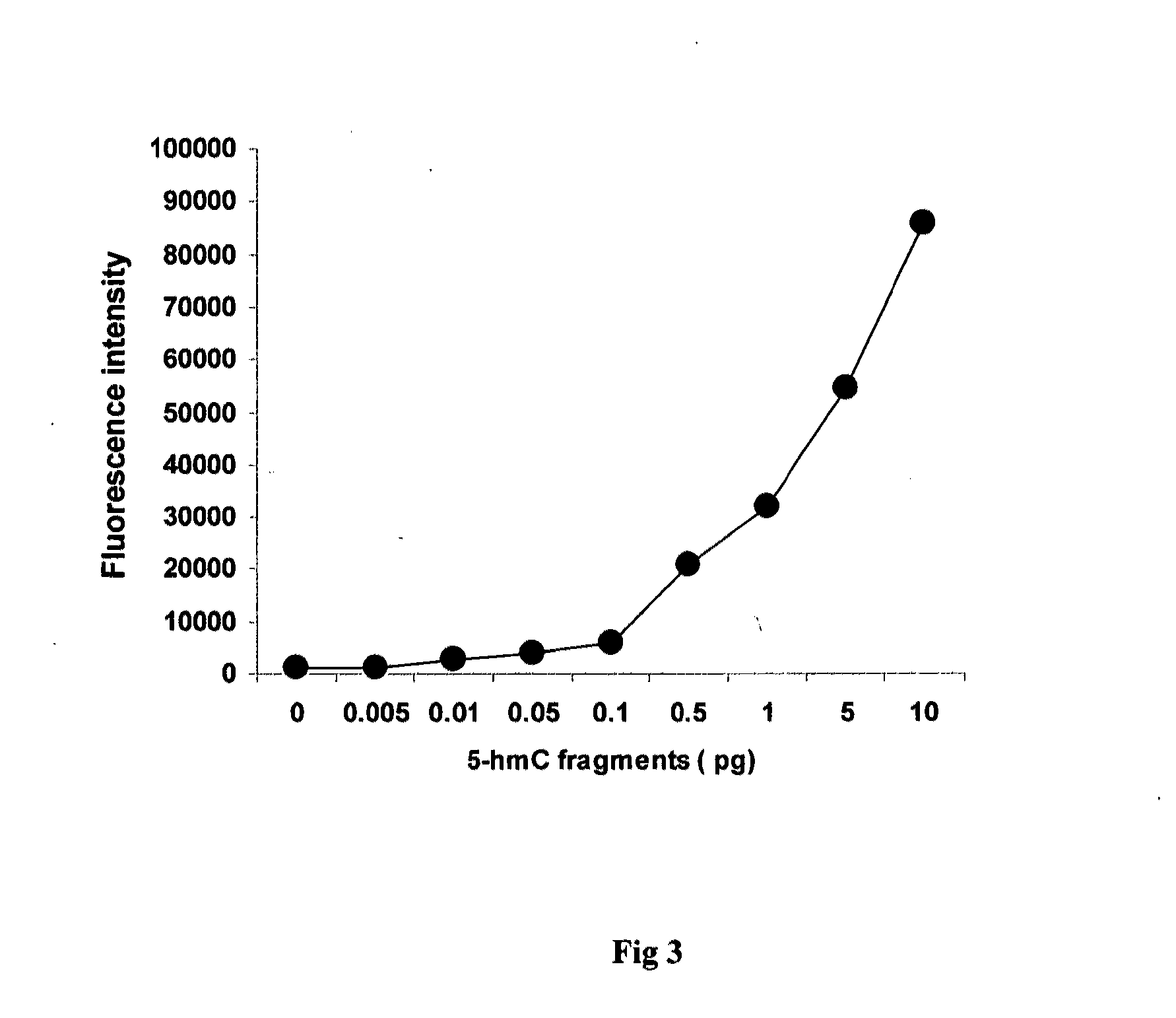High throughput detection of gene-specific hydroxymethylation
a hydroxymethylation pattern and high throughput technology, applied in the field of detecting hydroxymethylation patterns in dna samples, can solve the problems of inability to identify gene-specific hydroxymethylation, inability to detect 5-hmc methods, laborious methods, etc., and achieve rapid detection and analysis of hydroxymethylation patterns. , the effect of simple and high throughpu
- Summary
- Abstract
- Description
- Claims
- Application Information
AI Technical Summary
Benefits of technology
Problems solved by technology
Method used
Image
Examples
example 1
[0039]The experiment was carried out to test the stability and the efficiency of the nanobead amplifer binding to the capture antibody.
[0040]1. Preparation of nanobead amplifier. The nanobead size and type are selected based on that the specific binding of the beads to the target should be stable and tight with minimal non-specific background, while the surface area of the beads should be as large as possible for maximally conjugating affinity antibody and labeling moieties. The streptavidin-coated magnetic beads in a diameter of 200 nm were found to be the most appropriate. To prepare the functionalized nanobead amplifier, 1 mg of the beads (approximately 1×1010 beads) was washed twice with PBS and resuspened in the 1 ml of PBS. 20 μl (10 μg / ml) of biotin-labeled anti-rabbit IgG (Pierce) as affinity antibody and 20 μl (50 pmol / μl) of biotin-labeled HRP (Sigma) as labeling moieties are added into the suspended beads solution, respectively. The mixed solution was incubated at room te...
example 2
[0042]This experiment was carried out to test the sensitivity of the method of this invention in quantifying gene-specific hydroxymethylation.
[0043]100 μl (2 μM) of a 54 mer aminated capture oligonucletides complementary to the sequences within the promoter / exon1 region of gene MLH1, were immobilized to NOS-DNA Bind stripwells (Corning). The wells without oligonucleotides were used as the blank. After washing with 0.1 M of carbonate buffer, the stripwells were dried and used for hybridization. PCR fragments containing four 5-hydroxymethylcytosines were mixed with DNA isolated from a HCT116 colon cancer cell line that contains little to no 5-hmC and has no MLH1 methylation. The ratios of hydroxymethylated fragments to HCT116 DNA were 0.005, 0.01, 0.1, 0.5, 1, 5, and 10 pg to 100 ng of HCT116 DNA. 100 μl of mixed DNA (100 ng / 100 μl) was denatured by boiling for 5 min and then hybridized to the strip wells immobilized with capture oligonucleotides. The PCR fragments containing unmethyl...
example 3
[0045]The experiment was carried out to examine the specificity of the method based on this invention in detecting gene-specific hydroxymethylation patterns
[0046]100 μl (2 μM) of a 54 mer aminated capture oligonucletides complementary to the sequences within the promoter / exon1 region of gene MLH1, were immobilized to NOS-DNA Bind stripwells (Corning). The wells without oligonucleotides were used as the blank. After washing with 0.1 M of carbonate buffer, the stripwells are dried and used for hybridization. In Group 1, PCR fragments containing four 5-hydroxymethylcytosines were mixed with DNA isolated from HCT116 colon cancer cell line. The ratios of hydroxymethylated fragments to HCT116 DNA are 0.01, 0.1, 0.5, 1, 5, 10, and 50 pg to 100 ng of HCT-116 DNA. 100 μl of mixed DNA (100 ng / 100 μl) was denatured by boiling for 5 min and then hybridized to the strip wells immobilized with capture oligonucleotides. In Group 2, PCR fragments containing four 5-methylcytosines were mixed with DN...
PUM
| Property | Measurement | Unit |
|---|---|---|
| size | aaaaa | aaaaa |
| diameter | aaaaa | aaaaa |
| diameter | aaaaa | aaaaa |
Abstract
Description
Claims
Application Information
 Login to View More
Login to View More - R&D
- Intellectual Property
- Life Sciences
- Materials
- Tech Scout
- Unparalleled Data Quality
- Higher Quality Content
- 60% Fewer Hallucinations
Browse by: Latest US Patents, China's latest patents, Technical Efficacy Thesaurus, Application Domain, Technology Topic, Popular Technical Reports.
© 2025 PatSnap. All rights reserved.Legal|Privacy policy|Modern Slavery Act Transparency Statement|Sitemap|About US| Contact US: help@patsnap.com



